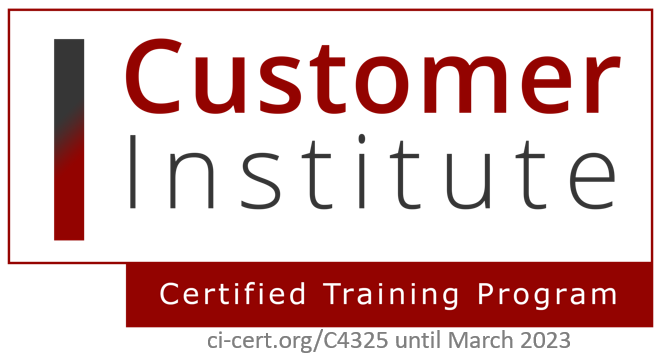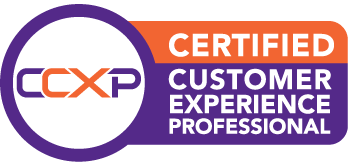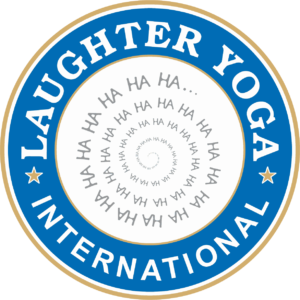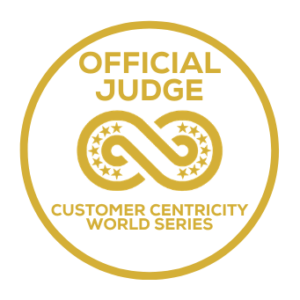- Intro. How I learned more about Yoga and different types of Yoga during a month in Nepal
- What is Yoga and what are Chakras
- 16 types of Yoga connected to the 7 Chakras: overview
- More details about Yoga Nidra
- Questions for ReflectAction and learning
- Next steps to bring more yoga, happiness, and wellbeing in your life and work.
Intro. How I learned more about Yoga and different types of Yoga during a month in Nepal
In June 2023, I gave myself the best gifts of all: a full month for myself, my self-care, and my self-growth, going for a full month to Nepal, joining three different courses (Yoga, Reiki, and Singing Bowls) and enjoying this wonderful country and all the care I received at the Himalayan Yoga Academy. I have shared more about why I did this and the whole experience in the post 15 takeaways from my Yoga Teacher Training & journey in Nepal. Here I want to share about the 16 types of yoga I discovered exist!
One of the trainings was the 200-hour Yoga Teacher Training (which I knew would include Hatha Yoga and Ashtanga Yoga). Before joining this training, I thought – likely like many people – that yoga was mostly about postures (asana), breathing, and a meditation/spirituality aspect of connecting mind and body to reach more peace. I didn’t realize how much more extended than that yoga actually is, and the deep connection that exists between yoga and the chakras.
As part of the Yoga Teacher training and the requirements to obtain the certification, in addition to practicing daily at least 90 minutes of Hatha Yoga and 90 minutes of Ashtanga Yoga, I was required to complete three written assignments, three practical assignments, a written exam and to prepare a 20-minute presentation deepening research and understanding on a topic of choice. Since I’m really fascinated by overviews and a deep understanding of concepts and connections among them, I choose to look at the different types of yoga (did you know there are 16 main ones?) in relation to the 7 different chakras. In this blog post, I want to share with you the results of my connection-making and the overview that resulted from it.
As likely many other people, I always assumed that Yoga was about a sequence of postures to stretch and relax the body. In this month, I learned that postures (Asana – which represents Harmony with the body) are only 1 of 6 key elements of Hatha Yoga and 1 of the 8-fold paths or limbs or ethics of Ashtanga Yoga, where Hatha and Ashtanga Yoga are only 2 of 18+ types of Yoga. Yoga is so very much more than just Asana as we assume in the West.
In the post 15 takeaways from my Yoga Teacher training & journey in Nepal, I shared more about what is Yoga to me. Here I wanted to share about the different types of yoga in relation to the chakras and do so in the most simple and high-level overview possible.
What is Yoga and what are Chakras
First, what is yoga?
Yoga comes from the Sanskrit root yog/Yugoslav which means “union”. Yoga is the union, harmony, balance, and connection of body, mind, energy, and soul.
The mission of Yoga is summarized in 3H: Health, Happiness, and Harmony, which totally resonated with me and is very aligned with my own mission. The goal of yoga is self-realization and that happens through the chakra.
Chakra instead means “spinning wheel” of energy. In our body, we have 6ML 400k minor chakras & 72k nadis. The main chakras are 8: 7 chakras in the body and 1 outside the body.
We will write more about each chakra in the post “The link between perception and energy (chakra/breathing)” [coming soon]. Here we simply introduce each chakra and then focus on the type of yoga connected to each.
16 types of Yoga connected to the 7 Chakras: overview
[1] 🔴 Muladhara (source position) – Root – Stability, source of all energy. Food & shelter, survival, safety.
1. KARMA Yoga – Yoga of action: way of living. It uses the body and has six levels: Akarma (good without expectations), Karma (good with expectations), Vikarma (bad); Prarabda (karma from previous lives), Agami (karma that may come in future as a result of past actions), Vartman (karma manifesting now from past actions)
[2] 🟠 Swadhistana (sweetness) – Sacral – Seeking pleasure and security. Reproduction & creative force, family, fantasy
2. TANTRA yoga – Yoga of senses – mastering the senses. This yoga is about witnessing the desires and letting them go. It’s about exploring with balance. There are different levels/types linked to the 5 senses + 1 (mind) and beyond.
-
- Darshan (sight)
- Sharawan (listen)
- Suganda (smell)
- Swadha (taste)
- Sparsha (touch)
- Madhir (mind)
- Aghora (choiceless: accepting everything as is)
- (Vibhuti – ash superpower – can see past present & future. Result of all other practices.)
When hearing this definition of Tantra Yoga from our teacher (and the addition that the kamasutra is intended only to make the act of reproduction more pleasurable) I was quite surprised that it didn’t include any of the elements we tend to hear about it in the West, so I did some additional research on this and found that there are three types of Tantra yoga:
- WHITE Tantra: this is the right-handed path practice that abstains from all sexual practices and works only with energy and meditation. This is the only Tantra the teachers I had at HYA seemed to know, share, and practice, surprisingly (to us) observing sexual abstinence even in their marriages, unless for procreation purposes (which totally reminds me of the most conservative Catholicism approach)
- RED Tantra: this is the left-handed path that embraces sexual activity as well as other practices. It used to exist in India before the invasion of the Mughal Empire (1736-47) and the British colonization in the early 19th
- BLACK Tantra: this is practiced by those who embrace the dark energies in life as part of their awakening, though often misusing energies to manipulate others.
[3] 🟡 Manipura (city of jewels) – Solar plexus – Self-assertion, dynamism & confidence, power & strength.
3. HATHA YOGA (Harmony of body; balance between HA Sun & THA Moon, male & female, left & right brain). This is the type of yoga most commonly known and practiced in the West. It has two main schools of thought/practice based on two ancient texts:
-
- Hatha Pradipika, written in 1350 AD by Yogi Swatmarama
-
-
- Asana: Body Postures. This is the most common part of yoga we perform in the West.
- Shatakarma: 6 cleansing actions. Neti, Kapalbhati, Basti, Dhauti, Nauli, Trataka.
- Pranayama: Art, science, and practice of increasing the life force using our breath.
- Bandha (hold/lock): jalandhara (throat), moola (perineum), uddiyana (abdominal), maha (the great lock)
- Mudra (gestures/attitude):
- HASTA (hand): jnana, chin, yoni, bhairava, hridaya
- Mana (head): khechari, kaki, umnani, …
- Kaya (postural): prana, yoga, tadagi, vipareeta karani, …
- Bandha (lock): maha, mahabeda, mahavedha
- Adhara (perineal): ashwini, vajroli/sahjoli
- Nada (sound) and Anusandhaana (Inner inspection) which include the stages of Dhyana (meditation) & Samadhi (realization and enlightened) also part of Ashtanga
-
-
- Gheranda Samhita by Maharshi Gheranda:
-
-
- Shatakarma,
- Asana,
- Mudra,
- DHIRIAM (pratyahara: withdrawal of sense – mind ethics): Yoga Nidra (yogic sleep – See below for more details) & Use of 6th sense;
- Pranayama;
- DHYANA (meditation),
- Samadhi
-
- ASHTANGA YOGA is about the 8-fold paths or ethics. The first four ethics are the same as HATHA YOGA (external – Bahiranga), the fifth is a bridge, ethics 6-7-8 are RAYA YOGA (internal – Antaranga).
- Yamas – Social Ethics – respect of others (non-violence, truthfulness, non-stealing, non-possessiveness, attitude of self)
- Niyams – Self Ethics – respect of self (purification, contentment, tenacity, self-study, self-surrender to God)
- Asana – Body Ethics. Posture – Harmony with body
- Pranayama – Breath Ethics. Breath control – Harmony with with energy
- Pratyahara – Mind Ethics. Withdrawal of senses. Harmony with emotions
- Dharana – Attitude Ethics. Concentration. Harmony with thoughts
- Dhyana – Wisdom Ethics. Meditation. Contemplation
- Samadhi – Consciousness Ethics. Liberation. Ecstasy
5. KRIJA YOGA – we use the energy. Breathing exercises.
[4] 🟢 Anahata (Unstruck/Unhurt) – Heart
6. BHAKTI YOGA – Yoga of devotion & surrender. We use the emotions.
-
- Natasha Bhakti (9 steps): I listen, I sing, I remember, I follow every instruction he says, I worship, I ask, I’m a servant, I’m a friend, I request from the heart & God requests from me
- Ragatmik Bhakti: happens by itself, with deeper and spontaneous devotion.
7. MANTRA YOGA – vehicle to transport the mind. It has three different types: Pranava (OM – AUM – So ham), Deviya (worship/prayer), Divya (seed/divine sound), and four stages: loudly, whispering, mentally, and inner sound.
8. LAUGHTER YOGA: this is the Yoga I was already familiar with and I have written at length in the post The Power of Laughter. I now fully understand why is called “Laughter Yoga” even though NO Asanas are ever performed and, when having to associate it with a Chakra, I placed it here, because even though is about expression, it doesn’t use the mind, but it uses the heart and is closer to Mantra and Bhakti Yoga.
[5] 💙 Vishuddi (no need to clean) – Throat – Expression
9. JNANA/ GYANA YOGA – we use the mind/ knowledge: self-analyzing towards true knowledge and realization. It represents the stages of Sadhana (self-practice): External (discriminative discernment and detachment); Internal (Listen, Analyze, Self-practice: if good express it, if not let it go without sharing or doing it)
10. LAYA YOGA – Yoga of Rhythm: this yoga happens by itself as rhythm.
[6] 🔵 Ajna (Commander) – 3rd eye
11. RAJA YOGA (Royal): includes all the yogas and emphasizes the benefits of meditation.
12. DHYANA – Meditation Yoga.
[7] 🟣 Sahasrara (Beyond senses/limitless) – Crown
13. SAMKHYA YOGA. It is to awaken and move from 3rd eye to the crown.
14. SAHAJ YOGA. It happens spontaneously. Represents the Enlightenment. It’s about moving from the inner crown (chakra 7) to the outer crown (chakra 8), the Bindu.
Additional types of Yoga
Some additional types of yoga that you may have come across (hence reporting them here for completeness) relate to all the chakras and/or to the wider philosophy of yoga.
-
- KUNDALINI YOGA – this is the totality of yoga. Art and science of transformation and expansion of consciousness, the awakening and raising of Kundalini power up the spine through all the energy centers / Chakras.
- YOGA DARSHANA by Patanjali. This is a 2.300-year-old treatise on yogic philosophy and includes 195 sutras in 4 chapters:
- Samadhi: consciousness
- Sadhana: self-practice
- Vibhuti: ash/supernatural power as result of self-practice
- Kaivalya: isolation and ultimate enlightenment
More details about Yoga Nidra
Yoga Nidra means yogic sleep, which means our mind is fully conscious and completely awake and our body goes to sleep. This technique has the following powerful benefits:
- Is a powerful relaxation and recharge technique.
Sleep is a natural recharge mechanism of our body and mind. In today’s stressful life, many people in the business world are not getting enough sleep. They feel drowsy during the day and cannot focus and concentrate on their work. As a result, efficiency and performance drops.
Yoga Nidra is a powerful relaxation technique that helps to recharge quickly so that we perform to the maximum. Just 30 minutes of Yoga Nidra will give you the relaxation equivalent to two hours of ordinary sleep.
- It’s a great Mind Programming Technique
Many times, we struggle to give up a bad habit and despite our best efforts, we are not able to give them up. On the other hand, they make new resolutions that are hard to implement. This is because we make these decisions from our conscious mind without any changes in the subconscious mind or the deeper mind. Yoga Nidra helps us to connect to our sub-conscious mind and whatever we say or listen to during Yoga Nidra is directly registered into our sub-conscious mind without any contradiction. Therefore, if you want to change your lifestyle or change any habit, make a resolution (a Sankalpa) and say it thrice while doing Yoga Nidra (both at the beginning and the end of the session); it will manifest quickly and help us bring about the change.
- It’s a great Gateway to Meditation
For most people, it is very difficult to meditate because there is a continuous stream of thoughts that keeps coming even if we don’t want it. Our mind cannot focus and concentrate unless the body is relaxed. Therefore, the first step to meditation is body relaxation. Yoga Nidra provides the easiest way to relax our body and mind and help us concentrate thereby leading to a meditative state.
4. It’s so easy anyone Can Do it
Yoga Nidra is suitable for every one of all age groups – from children to seniors. All we have to do is lie down on the floor or sit on a chair and just listen to the instructions of the facilitator and follow them. We may likely fall asleep, but we will still get the benefits as the unconscious mind is absorbing the practice. It is a kind of simple meditation which reduces the number of thoughts significantly.
New to Yoga Nidra and want to practice it with us?
You can find on YouTube the recording of the Yoga Nidra I conducted during my time at HYA in Nepal as part of my exam.
Also, we have two episodes of our Happiness Contribution Show coming soon that will be dedicated to Yoga Nidra.
Watch our Yoga Nidra session on YouTube
Questions for ReflectAction and learning
📌 Did you already know about the many types of Yoga?
📌 Which type of yoga resonates most with you?
📌 Which type of yoga have you been practicing already in your life? Which one would you like to explore?
📌 Any additional type you know of that we should add to the list above and/or any other addition you would recommend?
👇 Share it with us in the comments so we can learn and grow together
Next steps to bring more yoga, happiness, and wellbeing in your life and work.
Is Yoga already part of your wellbeing practice? Have you ever considered taking a Yoga Teacher Training just as part of your own personal development? I didn’t, until the post from Ilenia Vidili on LinkedIn sparked the idea in me, so in case this post does the same for you, I can highly recommend the Himalayan Yoga Academy I stayed at and I’ll be happy to answer any additional questions that you may have. So reach out!
Curious to know more about wellbeing and happiness knowledge and practice in smaller doses and directly from me? Read on further or get in touch to discuss your specific needs.
How can I contribute to more happiness in your life and work?
I will be embedding all the new learning from this Yoga Teacher Training in existing & new courses to empower conscious leaders & companies to pursue happiness-driven growth both outside in & inside out! Get in touch if I can contribute to your individual or team growth with dedicated Yoga Programs. In the meantime, below you find a list of existing programs with which I can contribute.
Do you want to bring more harmony and happiness knowledge to your team or organization? I have a few options for you:
- Keynote: The Power of Laughter, The future of CX is HCX, Happiness Driven Growth
- Sessions: Happiness Booster Sessions Intro (75 to 90 minutes) or in-depth (3-4 hours)
- Training: 6 weeks “Stress Buster Joy Blaster” and “Wellbeing Boost“ or “HCX and Happiness Driven Growth”
Do you want to bring more harmony and happiness knowledge in your own life? Here are a few FREE options for you:
- Join our FREE 20-30-minute Laugh&Learn Zoom monthly session
- Listen to our podcast: Happiness Contribution™ Show
- Sign up for our monthly Happinews
- Check out my FREE Vault. You will find plenty of downloadables to support you on your HCX journey to create more Human-Centered and Happiness-Contributing Experiences for yourself and everyone you interact with or design experiences for.
Stay healthy, happy, and yellow!
Keep Smiling! Start Laughing!
💛 🌻 ☀️ Yours truly, Rosaria
* If you would like to know more about how to pursue Happiness Driven Growth in your company or would like us to deliver an engaging talk or masterclass about it at your event, get in touch or simply follow Rosaria Cirillo on LinkedIn & Instagram to receive her inspirational DOSE of Happiness.
** Customer experience is the perception customers have of the interactions with your company along every touchpoint and communication. It’s their truth. Great customer experiences don’t happen by chance. Instead, they require the orchestration of six disciplines across different teams and the mastering of six competencies. Would you like to learn more and grow your Customer Experience competencies? Get in touch to find out more about our newest HCX Online Academy, our in-company HCX Masterclasses, and HCX (Human-Centred and Happiness-Contributing Experiences) approach.
*** Yellow Factor is available for sale on Amazon/Kindle. Find links to your local Amazon store here. Did you already enjoy reading Yellow Factor and want to help us inspire more people? Helps us spread the word by sharing the quote that most resonated with you and by posting a picture of you with our book on social media using hashtags: #YFITW #YellowFactorInTheWorld #YellowFactorQuote #choosehappiness
About Rosaria
I’m an Italian sunshine of energy, enthusiasm, and passion, living in the Netherlands. I’m a Certified CX & Happiness Trainer, Advisor, Speaker, and Author with a mission to bring more happiness in the world one interaction at a time, the business world being my chosen playground!
I help conscious leaders make happiness their company’s competitive advantage with advisory, speaking, and training focusing on improving customer & employee experience (using VOC, VOE, and VOP as drivers for change).
I’m committed to empowering leaders and companies to achieve growth, productivity, and profits by cultivating happiness. Get in touch to find out how can I help you and your team with keynotes, training, and advisory services
Accelerate your HCX Transformation
Are you relentlessly trying to improve Customer & Employee Experience to ensure business growth? Perhaps your initial efforts are paying off, yet not enough and there is still something missing. How can your company achieve “remarkable” results while your employees feel that they make a meaningful contribution to a better world? Would you like to know how you can thrive and blossom while generating profits thanks to high retention? Check out our Training Programs based on the Happiness Driven Growth Model.
Nurture your well-being and flourish
The last 3 years have been tough! Working from home has taken a massive toll on all of us with reduced physical and social activities, increased stress, loneliness, and burnout. Chances are, you often ask yourself “how do I take care of my well-being with the limited time and resources I have? And where do I even start?”. Would you like to know how you can thrive and blossom in life and in business? Check out our Open Programs to nurture your well-being and increase your customer & employee experience knowledge.

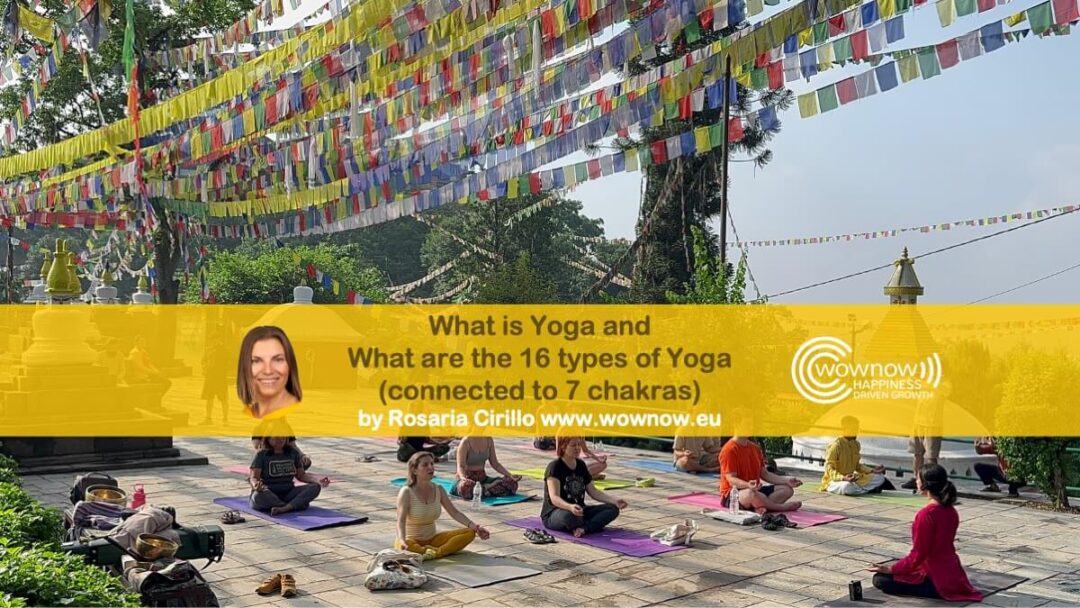





 A (little Italian) sunshine of energy, enthusiasm, and passion, with a mission to bring more happiness in the world one interaction at the time, the business world being my chosen playground!
I inspire and empower conscious leaders to nurture their happiness (moving from depleting to enriching emotions) and to move from depleting to enriching experiences, choosing, designing, and delivering WOW life-enriching interactions that contribute to everyone’s HAPPINESS, so they can achieve business and personal prosperity, making happiness their competitive advantage
A (little Italian) sunshine of energy, enthusiasm, and passion, with a mission to bring more happiness in the world one interaction at the time, the business world being my chosen playground!
I inspire and empower conscious leaders to nurture their happiness (moving from depleting to enriching emotions) and to move from depleting to enriching experiences, choosing, designing, and delivering WOW life-enriching interactions that contribute to everyone’s HAPPINESS, so they can achieve business and personal prosperity, making happiness their competitive advantage 